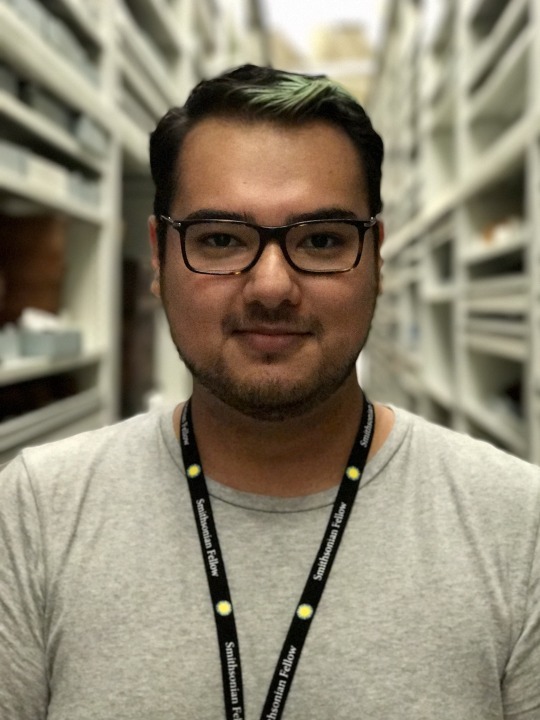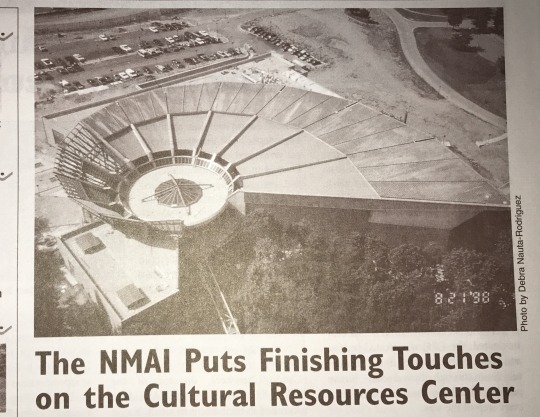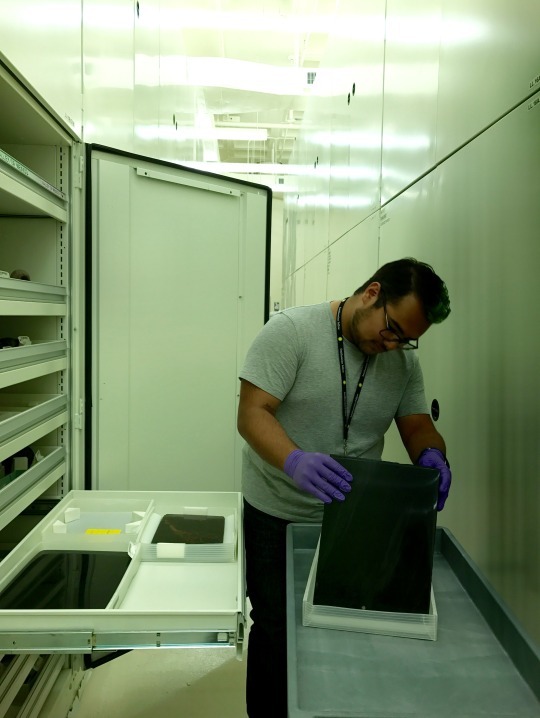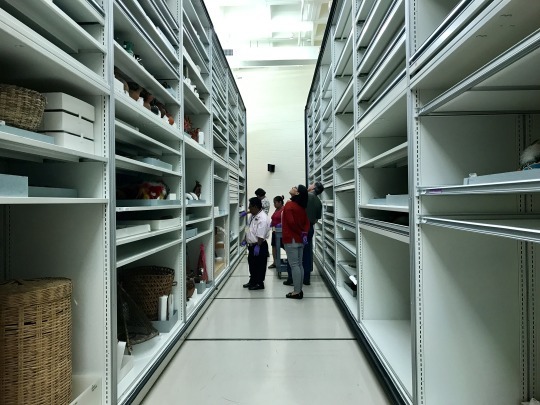#lmsp_2017
Explore tagged Tumblr posts
Text
#LMSP2017 Fellow Takeover: Mayela Caro
¡Hola y muy buenas tardes! My name is Mayela Caro. I am a Ph.D. student in the department of history and public history at the University of California in Riverside, and I am a Latino Museum Studies Program (LMSP) 2017 fellow working at the National Portrait Gallery.
My research field is in 20th century U.S. cultural history with an emphasis on the representation of race and gender, and Latinidad, in material, popular and print culture, film, and media of the 1920s through the mid-1940s. It is an honor to be part of the 2017 LMSP cohort and to have the experience of working with, and learning from, talented Latinx scholars from all over the country.

Mayela Caro, Ph.D. student in history and public history at the University of California, Riverside and 2017 LMSP fellow, posing in front of the National Portrait Gallery. (Photo by Diana C. Bossa Bastidas)
As an LMSP fellow at the National Portrait Gallery, I have had the pleasure of working closely--and to be mentored by--Dr. Taína Caragol and Dr. Leslie Ureña. It is a great experience to learn from such exceptional academics and museum professionals. My practicum, “Piecing Together: Latinx Art and History in the 19th Century,” has granted me the opportunity to receive a well-rounded view into exhibit research and development, and object-based research, by being involved on two projects at very different stages. During the first half of my practicum, I conducted research on the work and life of prominent photographers in New York City during the 19th century. This generation of photographers was instrumental in popularizing a new aesthetic that consisted of painted backdrops, elaborate props, and costuming. By studying these photographers and those who posed for them, we can learn about the social and leisurely life of the elite in 19th-century New York.

Mayela Caro (left) and Dr. Leslie Ureña (right), assistant curator of photographs, looking at cartes de visite from the mid-19th century inside one of the storage rooms. (Photo by Diana C. Bossa Bastidas)
My research skills as an historian, as well as my training in visual analysis and methodologies (particularly in popular culture), have served me well during my practicum. During the 19th century, cartes de visite which showcased famous socialites, or stage celebrities, were the popular culture of the time, and served as a type of pre-cursor to the fan magazines which featured Hollywood celebrities of the 20th century. It has been a wonderful experience to engage in detailed, in-depth research into the lives of these photographers utilizing the vast resources available through the Smithsonian Libraries. A highlight of the practicum has been the ability to partake in the rudimentary stages of preliminary research for potential future projects at the National Portrait Gallery. It is enlightening to see how a prominent national institution develops research questions, identifies voids in the scholarship, and determines ways in which the work at the National Portrait Gallery can make an intervention, a contribution, or bring out Latinx artists from obscurity. As a doctoral student, observing active and ongoing research projects at such early stages is especially motivating as I continue my doctoral journey and prepare to write my dissertation.

Mayela Caro sorting research documents into color-coded files. Caro is extremely grateful to the National Portrait Gallery for providing her with her own office for the duration of the fellowship. One of Caro’s favorite documents in the files are passenger logs from the mid-19th century, “It is interesting to learn how people were labeled and classified, and to see what personal information was deemed relevant from one decade to the next,” said Caro. (Photo by Diana C. Bossa Bastidas)
During the second half of my practicum, I am assisting with the research for an upcoming exhibit at the National Portrait Gallery. I will be conducting historical research on the Spanish-American war and participating in the process of identifying artworks and objects of potential interests for future exhibits and projects. Being an LMSP fellow has been a highlight of my academic career. I am always thrilled to go into work, whether it be at the National Portrait Gallery or at the Latino Center. I am humbled by the immense privilege to work and collaborate with some of the best museum professionals and academics in our nation—an absolute dream come true.
Mayela Caro looking at one of her favorite photographs in the exhibit, “America Now: JKF 100,” at the Smithsonian American Museum of Art. It is a photograph of 17-year-old Bill Clinton shaking the hand of then President John F. Kennedy on July 24th 1963, four months before Kennedy’s assassination.

Caro explains, “What I love about its photograph is that there is something almost magical about past and future coalescing in such a way. This photo captures a truly unique and serendipitous moment in time. Had the photographer not been there, this moment would have been lost, and so it is a real treasure.” (Photo by Diana C. Bossa Bastidas)
Follow the #LMSP Fellows via Instagram @smithsonian_lmsp @slc_latino, the Smithsonian Latino Center Facebook page or via Twitter @SLC_Latino.
1 note
·
View note
Text
#LMSP2017 Fellow Takeover: Jonathan Cortez

Jonathan Cortez at the Cultural Resources Center branch of the National Museum of the American Indian.
¡Hola todxs!
My name is Jonathan Cortez and I am currently a doctoral student in the department of American Studies at Brown University. Thank you for joining me on my #LMSP2017 #FellowTakover blog post. Be sure to check out my #DayInTheLife by following @Smithsonian_lmsp on Instagram.
Growing up in the coastal bend region of South Texas in the town of Robstown, it is from this region’s history and proximity to the U.S.-Mexico border where I draw my inspiration for academic research and community involvement. My work focuses on the role of federally-funded labor camps along the U.S.-Mexico borderlands as a site for specific formations of race, gender, and human control during the early-to-mid twentieth century. In addition to my academic work, I find museums to be an important space to disseminate and co-create histories with communities often left out of museum narratives. Being a Latino Museum Studies Program Fellow has allowed me to hone both my research skills and my interest in museums with a focus on having a responsibility to communities.

Top view of Cultural Resource Center. Photo by: Debrah Nauta-Rodriguez, from Runner No. 98-5, Sept/Oct 1998.
My practicum project is at the National Museum of the American Indian’s Cultural Resources Center (NMAI-CRC) where I am supporting Dr. Maria Martínez and Dr. Antonio Curet with the “Contextualizing Museum Archaeological Collections: The Case of Pre-Columbian Mirrors” project. Fun fact: the CRC holds most of the museum’s collections, about 98%. The NMAI views their collections as “living” in the sense that ancestral spirits continue to travel with these objects. This informs where the objects are kept, the proximity to other each other, what direction objects face, and how they are handled. By acknowledging the often violent ways in which these collections were acquired, the NMAI vows to stay in communication with Native communities and invite communities into the space to visit with their ancestral objects, and, if requested, take steps towards repatriation.

Jonathan Cortez examining the obsidian “mirror.” Photo by Maria Martínez.
My time since being at my practicum site has been a crash course in all things museums studies. Meetings about library research, archival material, data analysis, and cataloging are only a few of the training I have gone through. Curation, design, and collections will come in the next few weeks. The more special moments of the practicum thus far have been being on tours, especially with Native communities. The histories of these objects come face-to-face with their living descendants and are accompanied by many mixed emotions.

Tours with Native communities gives meaning to the collections beyond research purposes. On one tour with the Southern Ute from Colorado, the spiritual leader led a prayer in both Numic (Uto-Aztecan) and English. The CRC staff was encouraged to join the circle. The spiritual leader then prayed for the objects, acknowledging the looting and violence that took place for the museum to acquire, and he prayed for the staff, to be sure we can take care of the collection but also so that no spirits linger with us after we leave. The Southern Ute tribe proceeded to the private ceremonial room for more private prayer and smudging, if requested. As the tour journeyed through the collections, gasps at the astonishment of the objects could be heard alongside sniffles coming from a few tearful tribe members. These tours continue to bring with them emotional responses, evoking histories untold and peoples dispossessed.
Personally, this practicum continues to force me to reflect on the role of indigeneity in Latinx Studies. Traditionally indigeneity has been discussed, and rightly critiqued, within the scope of Chicanidad and the notion of mestizaje. However, working with the NMAI and getting to visit with Native communities moves past this historiographical view. Native communities are still here and continue to contribute to Latinidad as well as building their own identity within and beyond the U.S. nation-state. My time at the NMAI and CRC will continue to push me to center communities in the creation of museum design, content, and collection.
Follow the #LMSP Fellows via Instagram @smithsonian_lmsp @slc_latino, the Smithsonian Latino Center Facebook page or via Twitter @SLC_Latino.
0 notes